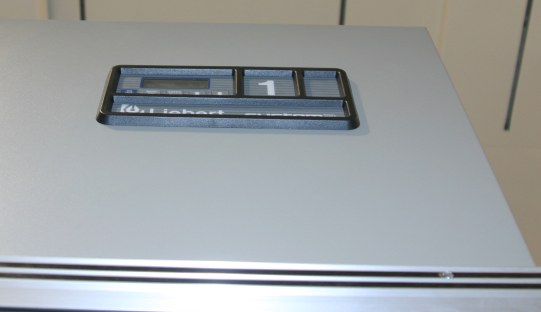About US Secure Hosting Center Cooling
Operating a facility that is located entirely underground presents some unique opportunities not only for reliability, but for energy conservation. Because it is underground, the colocation data center is not subjected to the wide seasonal temperature swings that the midwest is known for. This allows the cooling systems to operate at an optimum load capacity, year round. Combined with the natural cooling tendencies of the earth on the underground facility, the cooling system load is also lowered, all year long.

Reliability:
In above ground data center facilities, the hottest days of summer create extra heat load on the facility due to the natural laws of thermodynamics that requires heat to migrate from the warmer outdoors, in to a cooler building. A typical air conditioning system has to move the heat from inside the building to the hot outdoor air. As the temperate difference between the inside and outside increases, so does the energy required to move this heat. The capacity of the air conditioning system also decreases as the temperature difference increases. On a hot summer day, both of these conditions happen simultaneously. Heat load increases while the capacity to move this heat decreases. These two conditions compound each other to create a situation that can cause a data center to run dangerously short on cooling capacity on the hottest days when it is most needed. Since the United States Secure Hosting Center data center is underground, it does not receive extra heating load during the warm summer days.
Furthermore, USSHC’s primary cooling system is coupled to several miles geothermal tubing buried around the USSHC campus. This protects it from all forms of tampering, sabotage, or damage from any natural weather events that can cause problems with conventional air conditioning systems including any form of flooding, ice storms, and even direct hits from F-5 tornados. The cooling system is also not subjected to the wild temperature swings that stress direct air cooled, or cooling tower based systems. The temperature of the geothermal loop essentially stays the same as the outdoor temperature swings from nearly -30F during the coldest days of winter, to over 100F in the summer. Unlike conventional cooling systems, freeze protection systems on the outdoor equipment at our data center is not required in the winter. And extra capacity is not required even on the hottest days of summer.
Redundancy:
USSHC does have completely separate air cooled air conditioning systems as a primary backup and secondary backup, but these systems are only called upon in a contingency situation, or during routine system testing. Furthermore, both the primary backup and secondary backup cooling systems are entirely contained within the underground data center facility. No part of any air conditioning system is located above ground. Because the air conditioning can operate during and after major disasters, this feature alone separates us from nearly every other data center in the world.
Efficiency:
USSHC’s primary cooling system’s heat sink is a ground source (sink) geothermal. Because the temperature of the earth is cooler than the ambient summer outdoor temperature, less energy is required to move the heat from our data center. Since no fans are required to move outdoor air, it directly saves energy over air cooled systems. By having a constant temperature heat sink, and a constant temperature within the underground data center, our geothermal sink air conditioning systems can operate at their peak efficiency point, all year long.


